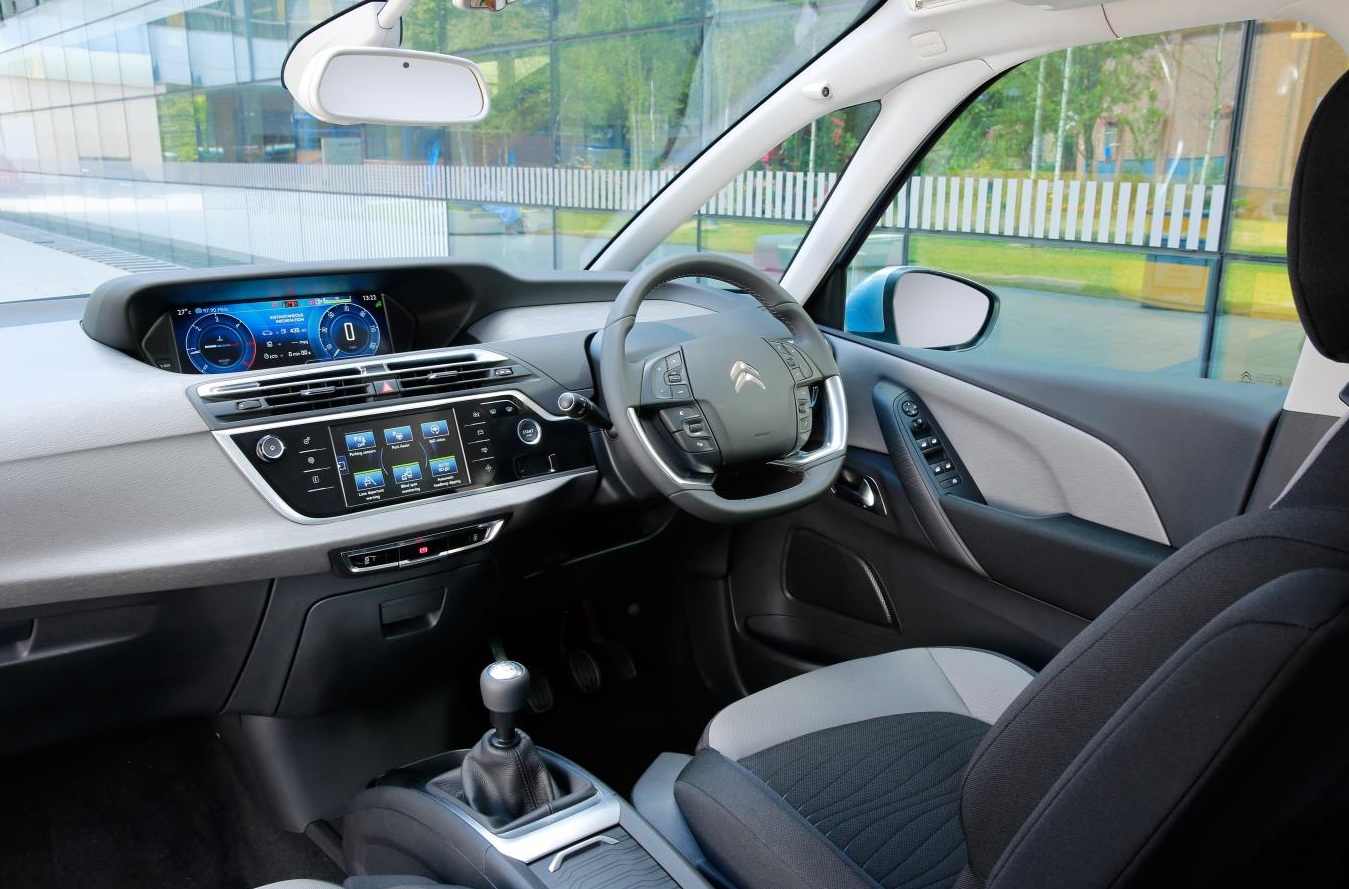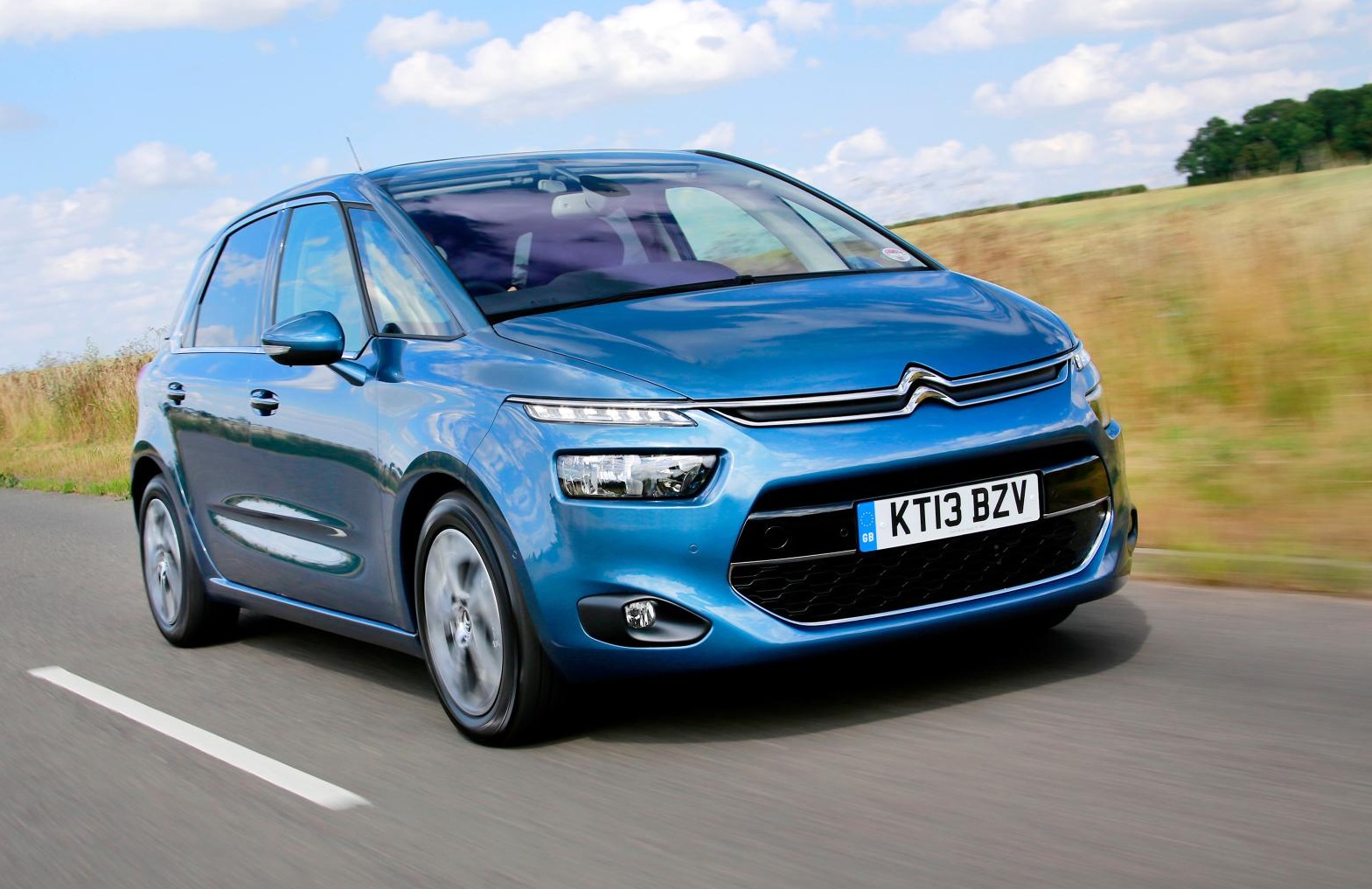Citroën C4 Picasso Mk 2 review (2013-on)
The Picasso range is Citroën’s blockbuster. This new version is tasked with continuing that success.
The Picasso range is Citroën’s blockbuster. The first car, the Xsara Picasso, was launched in 1999 after the company bought the rights to the Picasso name from the Spanish artist’s estate. No-one has ever quite understood the link between Cubism and cars but plenty bought the Citroëns: more than 400,000 Picassos have been sold so far.
Along with its big brother, the seven-seat C4 Grand Picasso, this new version is tasked with continuing that success. As family cars go, it is quite bold. The LED lights at the front looked so futuristic at launch that the first advertisements showed the car floating in space. Since then, the model’s looks have become familiar as increasing numbers of Picassos, charged with the more prosaic task of transporting a family and their luggage, have appeared on Britain’s more mundane roads.
Fortunately, the car comes well equipped for the job. Lighter, smaller, but with more interior space where it matters, it is priced to compete with the likes of the Ford C-Max, Renault Scenic and Vauxhall Zafira. It is available in four trim levels. Basic VTR spec, includes a 7in touchscreen in the centre of the dashboard. It controls functions such as the ventilation, stereo and phone (a Bluetooth connection is standard), as well as the optional sat nav. Air-conditioning, cruise control and hill-start assist technology, which can prevent the car from rolling back when you pull away on an incline, are standard.
The VTR+ trim is roughly £1,000 more and adds technology including automatic headlights and wipers, parking sensors, a DAB radio and digital air-conditioning, as well as aircraft-style folding tables in the back for the children. In both VTR specs, information such as your speed and fuel level is shown in a digital display above the touchscreen.
Moving up to Exclusive trim, for around £1,500, buys an HD screen in its place which, combined with the existing touchscreen, leaves you in no doubt that you are in the digital era. It allows you to choose between different layouts, ranging from essential information including speed and what radio station is playing, to a more detailed display that provides directions from the sat nav, which is standard at this level. Other useful equipment in the Exclusive includes a reversing camera, keyless entry and an extra USB slot. At the top end, for almost £2,500 more, Exclusive + brings show-stopping features such as a full-length glass sunroof, massage seats and intelligent laser cruise control, which maintains a set distance from the car in front.
The engine line-up hasn’t been devised for the enthusiast, but for the price-conscious family. Most of the diesels are capable of more than 70mpg, according to the official fuel economy figures, while CO2 outputs of less than 113g/km mean car tax is negligible. There are two 1.5-litre diesels, in cheaper 91bhp or more powerful 112bhp guise, and a 2-litre offering 148bhp and 0-62mph in less than 10 seconds. Like the petrol engines on offer (in 118bhp spec or tuned to 154bhp), this more powerful diesel is not currently available with an automatic gearbox.
The drive
The C4 Picasso is a car designed around its passengers, with a brief to relax rather than excite. This is clear from behind the wheel, where excellent visibility and a high driving position give a commanding view both of the road ahead and to the side.
In town and also on the motorway, ride quality is good. The car’s suspension absorbs bumps well, making the ride smooth rather than bouncy. The cabin is also a quiet place to be, without intrusive engine or wind noise. Driven calmly, the C4 Picasso cossets its passengers well. If you try to push on down minor roads, though, the zen bubble bursts as passengers are pushed from side to side by noticeable body roll. Perhaps this is why Citroën has made the steering light, with a minimum amount of feedback. Although you can just about sense grip levels and the angle that the wheels are pointing, the car doesn’t reward the enthusiastic driver.
The six-speed ETG6 automatic gearbox, which promises fuel economy equivalent to a manual car, continues the theme, smoothly shifting up the gears without fuss or any sense of sportiness. The manual gearbox also has a reputation of being competent but not exceptional. The mid-range, 112bhp diesel engine has no problem ensuring the Picasso stays with the traffic, but it isn’t particularly lively. If your trips involve a lot of overtaking, then the bigger diesel or petrol engines are a better choice.
As a driver, the most exciting bits are when you cede control to the Citroën; assuming, that is, that you have been unable to resist going mad with the options list. Its self-park function now works in perpendicular supermarket car park-type bays, as well as in parallel parking situations. Use the indicators to select the side of the road you want to park on and cameras will seek a space and then take over the steering, instructing you when to accelerate, brake or shift from reverse to first gears. We found that it was a bit hit and miss but that when it worked, it was remarkably efficient. Intelligent cruise control means that you can make entire motorway trips without touching the pedals.
The interior

Citroën has described the interior of the car as a loft space, conjuring up the image of a light and airy penthouse, with minimalist furniture sitting alongside high-tech gadgets. While we’re usually loathe to swallow marketing-speak, it’s easy to see where the company is coming from.
Even without the airy, optional panoramic sunroof, light streams in from the giant windscreen, and the two triangular windows between it and the doors. The cabin also looks clean and uncluttered thanks to the touchscreen assuming command of most functions.
There’s space, too; plenty of it in the back for three adults, although pushing the seats back to accommodate them does intrude a little on the sizeable 630-litre boot. Naturally, there’s an Ikea store-worth of cubbyholes. They’re in the floor, the doors, the boot and in the centre console where two people can charge their gadgets at the same time thanks to the option of a second USB port.
If you want to turn the Picasso into a van, then the rear seats fold flat. For more space, check out the C4 Grand Picasso. The front seat passenger can be particularly well catered for by selecting massaging seats (which the driver also gets) and a recliner-style leg rest that folds out from under the seat. However, they will also have to deal which the touchscreen, which can be fiddly to use, and Citroën’s optional sat nav, which now feels extremely outdated. The larger, optional HD screen above may look impressive but is not a necessity.
All of the rear seats have Isofix child-seat mounting points. Rear-seat passengers are also protected, like front occupants, by curtain airbags that inflate over the side windows in a crash. The car has a five-star Euro NCAP safety rating, which includes a high level of protection for adults and children.
The one to buy
Citroën C4 Picasso Exclusive e-HDi 115 Airdream ETG6
Factfile
- Engine:
- 1560cc diesel, 4 cylinders
- Power:
- 112bhp @ 3600rpm
- Torque:
- 200lb ft @ 1750 rpm
- Transmission:
- 6-speed automatic
- Acceleration:
- 0-62mph: 12.3sec
- Top speed:
- 117mph
- Fuel:
- 70.6mpg (combined)
- CO2:
- 104g/km
- Road tax band:
- B (free for the first year; £20 thereafter)
- Dimensions:
- L 4428mm, W 1971mm, H 1610mm





